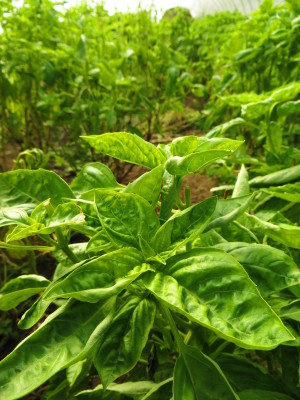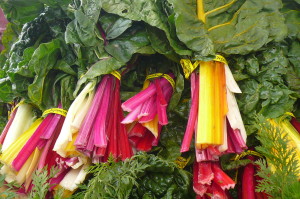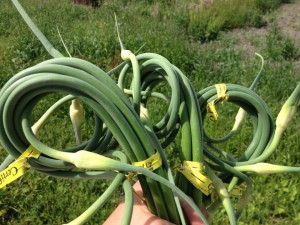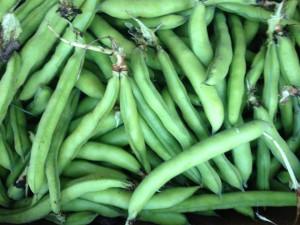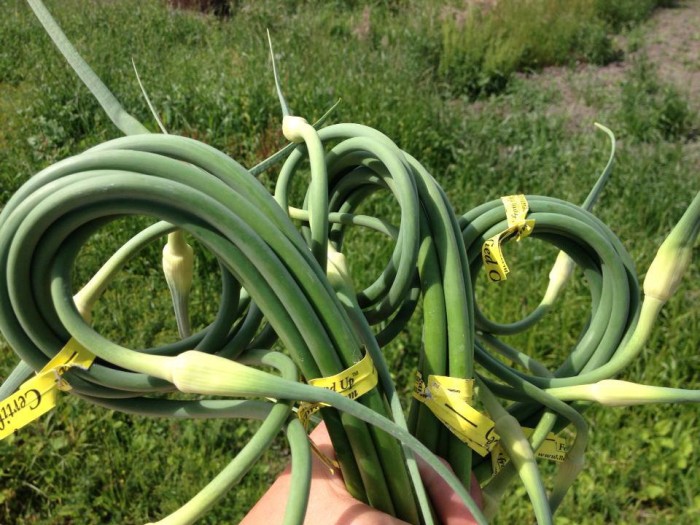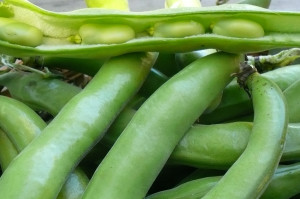1 bunch basil
1 bunch arugula
1 bunch garlic scapes
1 cup shelled fava beans
2 tablespoons soy sauce, Braggs, or tamari sauce (or more to taste)
1 tablespoon garlic powder
1/2 teaspoon nutmeg
1/3 cup olive oil
Salt to taste
Boil 5 cups water in a saucepan. Add the fava beans and garlic scapes and cook 5 minutes or until soft. Add the arugula and basil and cook 2 minutes more. Drain, add all other ingredients, and put into a food processor. Process until smooth.
Have you tried this recipe? Tell us how it turned out!

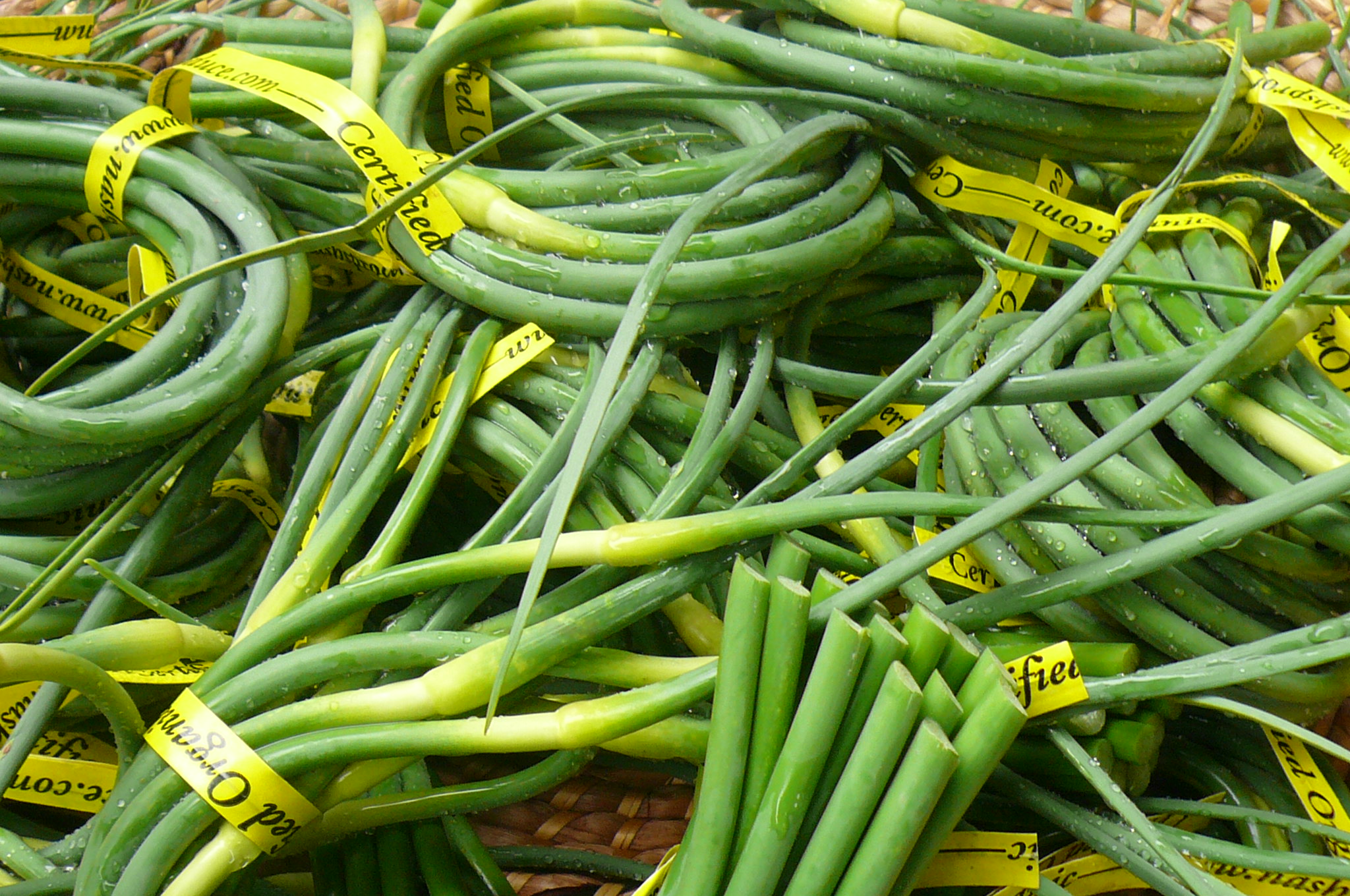 Garlic scapes are the flowering parts of the garlic plant. They often curl into whimsical curly-cues and offer a mild garlic flavor when sauteed. Use them as you would as you would use asparagus: grill them, pickle them, stir-fry them, or enjoy them in any other way you can imagine.
Garlic scapes are the flowering parts of the garlic plant. They often curl into whimsical curly-cues and offer a mild garlic flavor when sauteed. Use them as you would as you would use asparagus: grill them, pickle them, stir-fry them, or enjoy them in any other way you can imagine. 